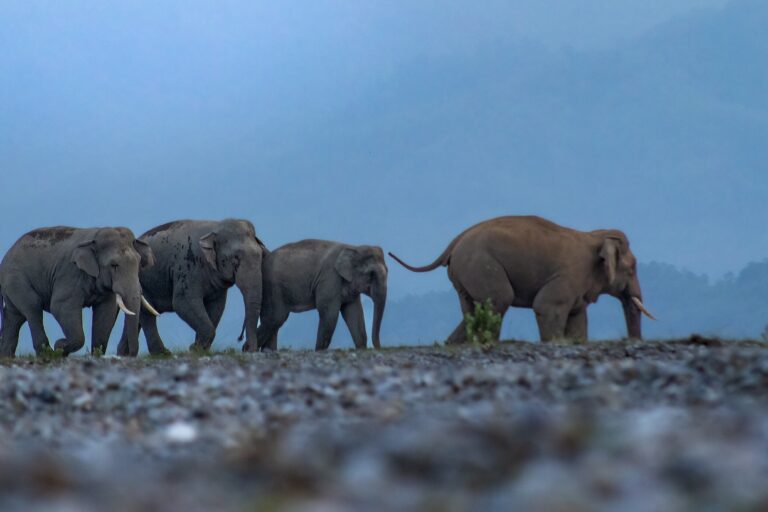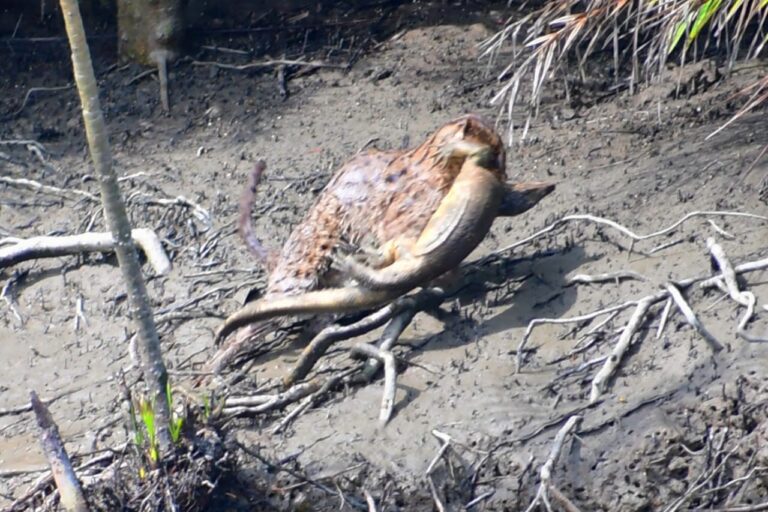- A recent report estimated India’s snow leopard population to be 718, with the most number of snow leopards found in Ladakh.
- Development infrastructure, climate change and free ranging dogs are some of the major threats faced by snow leopards.
- The report suggests improving landscape-level management and coordination, since a majority of snow leopard habitats fall outside of protected areas.
India has 718 snow leopards according to a report released earlier this month, by the Ministry of Environment, Forests and Climate Change, which estimated, for the first time, the number of snow leopards inhabiting the high-altitude Himalayan regions in India. This baseline figure can help propel conservation efforts for the charismatic species that must grapple with the challenges of climate change and an infrastructure boom in the Himalayas.
Conducted from 2019 to 2022 across six Himalayan states and regions, the population assessment provides more detailed insights into the breadth of the snow leopard’s range, experts told Mongabay-India. The survey found that the highest number of snow leopards are found in Ladakh with around 477 individuals, followed by Uttarakhand (124), Himachal Pradesh (51), Arunachal Pradesh (36), Sikkim (21) and Jammu and Kashmir (9).
“Numbers aside, the occupancy surveys give us an idea of which blocks have better snow leopard occurrences, especially in states like Arunachal Pradesh where there was almost no information at this level,” said Yash Veer Bhatnagar, country representative at the IUCN and a contributor to the report.
The last “guesstimate” of snow leopards in India, done in the 1980s by researchers from International Snow Leopard Trust, suggested India hosted between 400 and 700 snow leopards. “There was an urgent need to make a revised estimate of snow leopard abundance using improved methodology, especially since reliable density estimates are now possible,” says the report.

Focus on conserving the snow leopard was revived with India’s participation in the Global Snow Leopard & Ecosystem Protection Program (GSLEP), which “seeks to address high-mountain development issues using the conservation of the charismatic and endangered snow leopard as a flagship.” In 2019, the Union Environment Ministry released the national protocol for the Snow Leopard Population Assessment in India (SPAI), which guided the census survey.
Surveying snow leopards
The snow leopards are found at very high elevations, around 3,200 meters above sea level in the western Himalaya, and 4,200 meters in the eastern Himalaya. This harsh, rugged terrain is often devoid of forested patches and large human habitations. “The terrain is part of the reason why this exercise has been so challenging to do,” said Rishi Kumar Sharma, lead of the Snow Leopard Programme at the World Wide Fund for Nature India (WWF), and another contributor to the report.
The report relied on a two-step process to arrive at its estimates. The first method was an occupancy-based survey that sought to identify signs and evidence of snow leopards in 15 by 15 kilometre grids using a questionnaire, which was filled out by key informants (tour guides, porters, herders, paramilitary personnel, local people). The second step involved using camera trapped images and modelled simulations to estimate the population and its density – a method called spatially explicit capture and recapture. A total of 1,971 camera traps were set up across 70% of the snow leopard’s range, capturing 241 individual snow leopards.
“This method doesn’t just capture images of individual carnivores to estimate population. It uses collected data, like camera traps and repeated imagery from several cameras, to see how much the animals are moving, where all they are going, and computes the actual area that the study should encompass,” said Sharma, adding, “Previously, a lot of guesswork was involved in estimating how far an animal moved. This movement is built into this model.”

The Wildlife Institute of India acted as the nodal, national coordinator of the survey and collected inputs from states, delegating sampling activities from Jammu and Kashmir and Himachal Pradesh to the Nature Conservation Foundation, and technical inputs from Arunachal Pradesh and Sikkim to WWF India.
In Ladakh, where the most number of snow leopards were found, the survey covered 8,604 square kilometres of terrain. The report found that “habitat suitability…is observed to be at its peak in Western Ladakh and gradually diminishes towards the Eastern part of the landscape,” and attributed this to the preference among snow leopards in the region for high elevation and rugged terrains, irrespective of prey density. “The Changthang area in eastern Ladakh is largely rolling country. These areas are difficult for snow leopards to hunt in because they are stalking predators who need stealth to get very close to their prey and then launch the attack,” explained Bhatnagar, adding, “So, even if an area has considerable prey, snow leopards won’t be able to take advantage if there isn’t much stalking cover.”
Tsewang Namgail, director of the Ladakh-based non-profit Snow Leopard Conservancy India Trust, said the report was a good start, but needed a wider sample size and more detailed habitat stratification in the context of Ladakh. “There is a mention of stratification between western and eastern Ladakh, but the details of these differences don’t come out adequately in the report. Having said that, having these numbers is a milestone that other researchers can use to build on and conduct more rigorous surveys.”
With a baseline in place, the report suggests creating a network of local people, government departments, developmental agencies, and paramilitary forces among others to create a robust population monitoring system. It also suggests the Wildlife Institute of India establish a dedicated Snow Leopard Cell “with a primary focus on long-term population monitoring, supported by well-structured study designs and consistent field surveys.” A document of India’s snow leopard conservation plans estimates this will cost around $10.08 million.
Sharma is optimistic about improvements as future exercises take place. “I think we will see improvements in field work in the future, now that there is an idea of how it should be done,” he said.

Read more: Study finds climate change causing snow leopards to scale altitudes
Opportunities for conservation
India launched its first snow leopard conservation programme in 2009, called Project Snow Leopard, but there is little information about its effectiveness in the public domain. Snow leopard conservation gained visibility once more when India joined 11 other countries in the Global Snow Leopard and Ecosystem Protection Program in 2019. India’s efforts will further the objectives of participatory conservation under Project Snow Leopard the government had said.
The foremost suggestion in the report is improving “landscape level management and coordination,” since a majority of snow leopard habitats fall outside of protected areas. Three priority landscapes have been identified for this – Hemis-Spiti in Ladakh and Himachal Pradesh, Nanda Devi-Gangotri in Uttarakhand, and Khangchendzonga–Tawang across Sikkim and Arunachal Pradesh.
Studies have shown that the effects of climate change are forcing snow leopards in India to scale new heights. Snow leopards are keystone species, meaning they are a top predator that balances the ecosystem that it is part of. “Warming temperatures are causing snowmelt to run off rather than percolate into the pastures, which degrades their quality. This is likely to affect the quality of prey for snow leopards in the long term if they don’t get enough food to fatten up properly,” said Bhatnagar, adding, “Over grazing also reduces the availability of resources for wild prey.”

Apart from climate change, Namgail of the Snow Leopard Conservancy said free ranging dogs and rapidly growing infrastructure were a threat to snow leopards and other wildlife in Ladakh. “Retaliatory killings used to be a huge problem here too, because snow leopards would attack livestock. But tourism has helped mitigate this problem, because there is an economic incentive to not kill the snow leopards,” he said, adding, “The challenge is in showing people the ecological value, and not just economic value, in conserving this species.”
Much of the infrastructure in the border Himalayan states is done under the aegis of the government for “national security” purposes. The report suggests creating awareness among the armed forces occupying these regions can “foster long-term cooperation for the conservation of critical snow leopard habitats.”
Read more: Privacy concerns rise as wildlife surveillance tech ‘watches’ people
Banner image: A snow leopard walking across through a blanket of snow in the Himalayas. Photo by Ismail Sharif.














